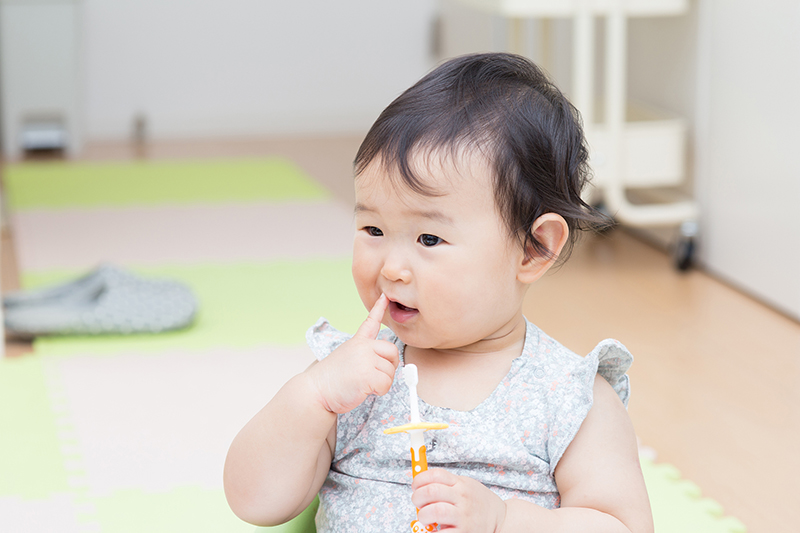Families For Life | Baby Bottle Tooth Decay

Baby bottle tooth decay is tooth decay in infants and children and most often occurs in the upper front teeth although other teeth may also be affected.
Prolonged milk bottle use may cause some children to develop cavities and lose their baby teeth early, and this is called baby bottle tooth decay (BBTD). The good news is that if the problem is recognised early, the tooth can still be saved.
Baby teeth are important for chewing. In addition, they also play a part in helping the baby learn how to speak and talk properly and healthy-looking teeth are a tremendous boost to a child's self-confidence and self-esteem.
The child's "milk teeth" are important because if these teeth decay and are lost too early, the tooth next to the decayed tooth may drift into the empty space making the adult tooth which develop later to grow crooked or crowded affecting the cosmetic part of your child's smile.
Causes of baby bottle tooth decay
The main cause is prolonged exposure to sweetened fluids from a bottle such as:
milk
formula
fruit juice and sugar or honey containing syrups.
The frequency and duration of exposure to the sugars in these feeds also play an important role in the development of this disease.
The bacteria in the mouth produce acids which attack the enamel of the tooth and eventually destroy the tooth.
Symptoms
Sometimes tooth decay may set in as soon as the baby's first tooth erupts and may go unnoticed. Some of the common symptoms of tooth decay include:
white spots on the teeth as a result of demineralisation in the teeth
cavities on the teeth
painful toothaches
swollen or bleeding gums
fever caused by gum or tooth infection.
Treatment
The treatment options for Baby Bottle Tooth Decay vary depending on the severity of the condition.
Discuss the best management option for your child with your dentist.
If chalky white spots or lines are detected early, the teeth may be re-mineralised by applying fluoride and modifying the child's diet.
If decay is obvious, filling material or stainless steel crowns can be used to cover the teeth.
If the decay has reached the pulp chamber, pulp therapy or extractions may be considered.
Prevention
Some simple tips to prevent this problem include:
After every bottle feeding, take a wet cloth or gauze pad and gently wipe your child's gums and teeth. This will remove any bacteria-containing plaque and excess sugar that may have built up.
The first tooth of your child is likely to erupt about six months old. As soon as the first tooth erupts, you can begin to brush the baby's tooth. There is no need to use toothpaste at this age of your child.
All his baby teeth should have erupted by age 2 or 2+. At this age, use a small pea-sized amount of children fluoridated toothpaste if your child is able to spit out.
Consider flossing when all the baby teeth have erupted usually around 2- 3 years of age.
Do not allow your child to fall asleep with a bottle containing a sweetened liquid other than water.
Do not give your baby a pacifier dipped in any type of substance containing large amounts of honey or other sugars.
Start to encourage your child to drink from a cup at six months.
Whenever juices are offered, let your child drink it from a cup.
By the time your child is around one year old, you can start to wean him from the bottle. Encourage your child to drink from a cup.
Arrange regular dental check-ups for your child and you may start as early as your child's first birthday. If your child has dental problems, visit your dentist at the earliest.
Explore more
Contributed by:
Health Promotion Board's Parent Hub